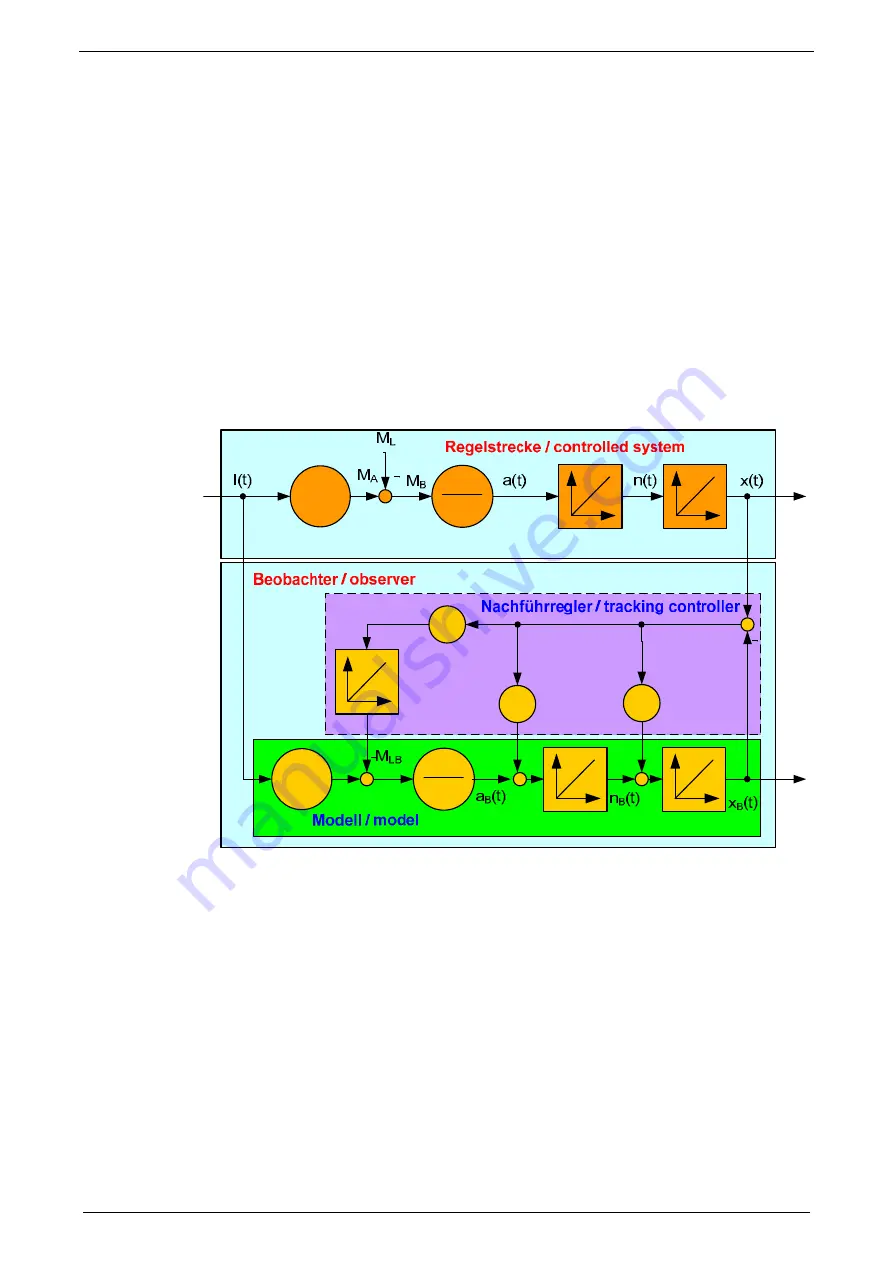
Parker EME
Setting up Compax3
192-120101 N11 C3I11T11 November 2007
163
The observer technology offers the advantage that the velocity can be calculated
with the aid of integration. The idea of the observer principle is to connect a
mathematical model of the control path parallel to the section observed and with
the same transfer behaviour. In this case, the controller also has the intermediate
variables (state variables) of the control path available. However in the presence of
model deviations (in structure or parameters), different signal values occur
between the model and the control path. For this reason, the technique cannot be
employed in this way in practice. However, the model contains the measurable
output signal of the control section as a redundant quantity. By comparing the two
variables, a tracking control can be used to adapt the model state variables to the
state variables of the control path. As the model deviations have become minor in
this case due to the simple mechanical drive train, the observer now has an
efficient aid available to increase the signal quality. Increase in signal quality in the
observer means that the noise components decrease, and the dynamics improve
as the observed speed is feedforward-controlled undelayed by the current and is
not just calculated delayed from the position signal using simple differentiation.
Signal flow chart Luenberg observer
T
K
Ges
J
⋅
π
2
1
T
K
Ges
J
⋅
π
2
1
0
h
1
h
2
h
I(t): Torque-forming motor current
Kt: Torque
constant
ML(t):
External disturbance torque
Jtotal:
Total mass moment of inertia (motor + load)
a(t): Acceleration
n(t): Velocity
x(t): Position
Index b:
Observed signal quantities
h0…h2:
Controller coefficients of the tracking controller
The figure shows that an additional I element is connected for interference compensation to correct external disturbance forces in the observer. Therefore the speed and the acceleration observed are statically precise. The same applies to the output of the integrator in the tracking controller which is a statically precise determination of an external interference torque ML. For this reason, the I term is not required in the speed controller, and the entire control can be set up as a state cascade control, which increases the bandwidth of the speed and position controlled member by factor 2. As a consequence, the interference stiffness of the drive and the tracking error behavior improve.
Here the quantisation of the speed signal is proportional to the sampling time TAR,
hence there is no longer any conflict between the requirements for minimum
sampling time and minimum quantisation noise. For the integral velocity
acquisition, the motor current variable, which is proportional to the acceleration,
can be used. This approach is particularly advantageous in direct drive
engineering; due to the absence of a mechanical drive train, there is a very good
match between the mathematical model of the observer and the real physical
control section in the fundamental frequency range of the control. This applies in






























